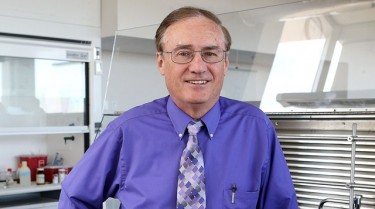By Michael Ferraresi
GCU News Bureau
The message is out there. Even the President has called for reform.
Now Grand Canyon University is taking steps to address the need to prepare students who are confident in the disciplines of science, technology, engineering and mathematics — not merely for success in the classroom, but also to serve the workforce of the future.
Arizona has a well-documented shortage of STEM-capable graduates for in-demand tech jobs. Studies indicate a disconnect between academics to teach students to technical disciplines like physics, organic chemistry and electromagnetics, and the companies that shepherd those tech-oriented students into jobs.
When GCU set out to address industry needs, University faculty and staff settled on offering computer science and information technology first, to lay the foundation for other degrees. Those were industry priorities, with engineering programs not far behind.
GCU convened an advisory board of local industry leaders from IT, biomedical, engineering, and other tech fields, to help to shape how the University prepares its students through curricula that emulate real-world business trends.
“We are designing our programs to meet those needs and ensure that our students are employable,” said Dr. Michael Mobley, who joined GCU last year as executive director for the University’s new Center for Integrated, Science, Engineering and Technology.
As new programs in engineering and other disciplines are unveiled, those industry leaders will be tapped for ideas on how to get students collaborating on STEM-related projects. Mobley said that ideas on how to get GCU tech students involved with outside, extracurricular opportunities is ongoing.
“If you have those relationships with industry, you can match up a student’s capabilities, skills or interests with the needs and opportunities you see in industry,” he said. “You want to build up those relationships and the confidence that industry has in your students.”
Of course, the preparation of students for roles in the tech and science industries begins before college.
Last year, President Barack Obama announced that since 2009, the federal government had facilitated nearly $700 million in educational partnerships to drive STEM education advancements. Those efforts included developing 100,000 new STEM teachers and to “broaden participation” in STEM education to reach more “women and girls and minorities,” according to the White House.
Also, in January 2013, the Obama Administration issued a call to CEOs of American tech companies to arrange for 20 percent of their tech employees “to teach or mentor for at least 20 hours per year, focusing especially on computer science and other areas of science, technology, engineering and math” by 2020, among other initiatives aimed to foster a nationwide sense of innovation for the future.
GCU’s outreach in K-12 schools with STEM programs has intensified over the past couple of years. University staff plans to host weekend youth science fairs beginning next month where students can visit the campus, hear about the need for skilled workers in tech industries, and envision themselves as part of that solution at the university level.
That dialogue between GCU and Arizona K-12 leaders extends to pedagogy, as university professors work with secondary school teachers to address STEM skills gaps that leave many students unprepared to advance through college science coursework.
STEM jobs are expected to grow by 26 percent through 2020, according to Georgetown’s Center on Education and Workforce. In Arizona, the job growth has outpaced the number of capable students too.
In a survey led by the Arizona Technology Council, leaders examined that disconnect between youth and college-level science. They called for a “technology ecosystem that produces homegrown talent in state,” so there’s no overreliance on out-of-state tech talent.
Linking science and business
GCU’s College of Science, Engineering and Technology will also rely on its own relationship with GCU’s College of Business to foster external workforce development.
A technology “Idea Lab,” led by business professor and Innovation, Development and Entrepreneurship Association adviser Tim Kelley, is set up in one of the corner study rooms at the east side of the second floor of the College of Science, Engineering and Technology building.
Faculty members envision the Idea Lab as a temporary place for collaboration between business and science innovations, to foster dialogue around the new academic programs. A new 3-D printer for fast prototyping is just being set up for the school year ahead. As GCU evolves over the next year, a new academic building on Camelback Road will break ground and eventually house more technology oriented lab space.
Dr. Randy Gibb, dean of GCU’s College of Business, said efforts like the Idea Lab provide students with a place to test their ideas or pool resources with a variety of students.
To meet the needs of industry, Mobley, Gibb and others have stressed the need to make campus academics mirror the dynamics of the tech workplace — providing students with a glimpse into budget planning, team innovation, project management, and other tactics to bring fresh ideas to fruition.
“It could be anybody, it doesn’t have to be an engineer,” said Gibb, who joined GCU earlier this summer and immediately set to work on getting the College of Business linked into the University’s overall STEM initiative.
“It’s one thing to have then engineering mindset, but you also need the business perspective or a business mindset about how to take things to market, how to grow it to scale,” Gibb said. “Diversity of thought and an intellectual and technical curiosity can foster innovation.”
Reach Michael Ferraresi at [email protected] or 602-639-7030.
















